
Disclaimer: I do not claim ownership of music and images used in the creation of this website. All credit for the images and media go to the original owners and artists. Any pictures and music used in the making of this website will be taken down upon request by its owner. Thank you.
~Legends of Absathus~
~Khet~
"The Upper Kingdom"
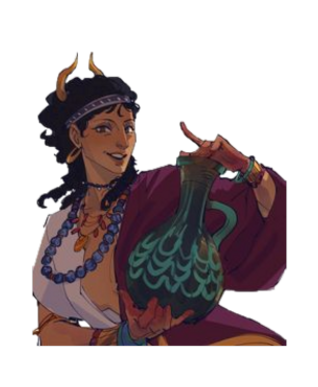
Onsua kesiu to the ancient kingdom, Khet! I'm Mikah! Here you will learn about the myth & lore of each city and region! Among this you will find that Khet is known for its vast deserts, ports, temples and glorious cities! If you are seeking to stock up on supplies, Port of Noth'tar is the best place to go! *Ahem!* Seems I have gotten a bit more focused on the markets! Allow me to start over! You will find that Absathus is divided into two vast regions...Khet being to the North while the Lower Kingdom was to the South. Khet is known for its oasis empire...Surrounded by wastes of sand for miles.
The capitol of the Upper Kingdom is known as Nazem. Rumored for its beautiful structures and elaborate temples. A paradise for the gods of Upper Absathus. Khet is also known for its vibrant and religious culture. The children of Hunra are known as the Nazemi... These people thrive upon the principals of loyalty, honor, dignity, integrity and above all, grace. These foundations have brought peace and prosperity to the Nazemi culture and its people since their making.
Nazem
_______________________________________________________________________________________________________________
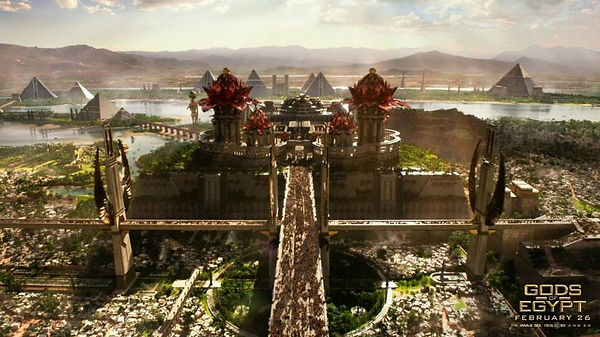
Nazem stands as the central birthplace of the people of Absathus, a beacon of wealth, knowledge, and spiritual significance. It is not merely a city but a sacred citadel, where the divine and the mortal converge. The land is rich in resources, where vast temples, libraries, and monuments serve as testament to the advanced wisdom and culture of its inhabitants. The people of Nazem are
devoted to the gods, and it is here that their religious practices and rites are most fervently observed.
Nazem is a place where scholars and priests gather, preserving the ancient knowledge of the world and passing it down through generations. It is a hub for intellectual pursuit, where the study of magic, philosophy, and divine law is integral to daily life. Pilgrims from across Absathus and beyond come to Nazem, seeking guidance, enlightenment, and blessings from the divine. The citadel’s temples are adorned with elaborate carvings, statues, and inscriptions that tell the sacred stories of creation, of gods, and of ancient heroes. This central city represents not only the physical wealth of Absathus but also the spiritual and intellectual wealth of its people. It is a place where the divine and human intersect, and where all who visit are expected to partake in the ancient rituals and honor the gods who shaped the world. Nazem stands as a pillar of both faith and learning, a guiding light to those who seek understanding in the mysterious world of Absathus.
_______________________________________________________________________________________________________________
Port of Noth'tar
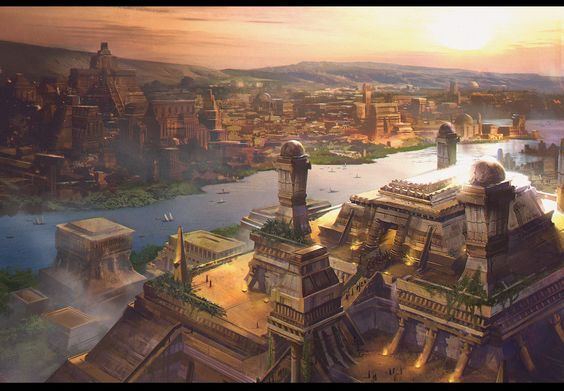
The Port of Noth'tar is a vibrant, bustling hub of trade and cultural exchange within the Realm of Absathus. Situated in the small province of Noth'tar, located within the Upper Kingdom, it serves as a vital gateway between various regions and civilizations of the realm. The port is renowned for its diverse population, with people from many different cultures and backgrounds converging here to trade goods, share knowledge, and engage in diplomacy. This melting pot of customs, languages, and traditions makes Noth'tar a place of constant movement, both literal and metaphorical, as goods and ideas flow freely in and out.
The wealth of Noth'tar is said to be the
Plains of Dust
_______________________________________________________________________________________________________________
lifeblood of the mighty Khet, one of the two ruling brothers of Absathus. It is here in Noth'tar that much of Khet's fortune is amassed, as the port controls a significant portion of trade, both maritime and overland. The goods that pass through Noth'tar are said to be rich and varied, from exotic spices and fine textiles to rare magical artifacts and precious metals. The wealth generated by the port sustains the Upper Kingdom, providing Khet with the resources necessary to maintain his rule and ensure his dominance over the region.
Noth'tar's importance extends beyond just its economic value. The port is a center of political and cultural influence, where visitors from distant lands come to negotiate, form alliances, and seek favor with the powerful elite. In a realm as diverse and complex as Absathus, Noth'tar stands as a crossroads, where the fates of many different peoples and cultures intertwine.
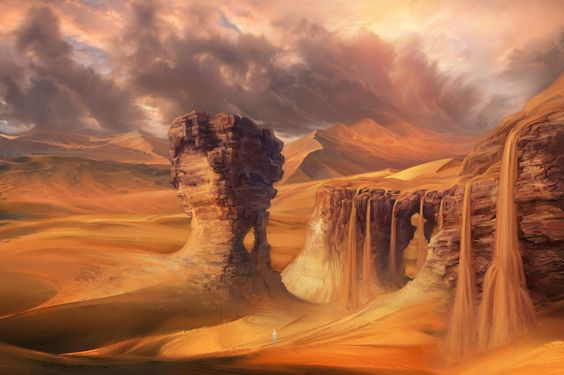
The Plains of Dust are a desolate and haunting wasteland, a vast stretch of barren land so devoid of life that even the sands seem to flow like rivers, shifting endlessly in the wind. Once, in a time long forgotten, this land was a lush paradise—an expanse of vibrant rainforests teeming with exotic flora and fauna, where majestic waterfalls cascaded through the
The Badlands
_______________________________________________________________________________________________________________
landscape, creating a harmony of life and beauty. But now, all that remains is an empty, lifeless desert, where the very air feels heavy with the weight of its lost past. Legend holds that the transformation of the Plains of Dust was the result of a great tragedy among the gods. It is said that a divine conflict, one of immense sorrow and destruction, befell the heavens, and in the aftermath, the once-thriving land was cursed, left to decay into the desolation it is today. The rivers of sand that now dominate the plains are thought to be remnants of the once-lush waters that flowed freely through the forests, now twisted and dried by the gods' wrath.
The legends surrounding the tragedy are shrouded in mystery and sorrow, with the gods themselves remaining tight-lipped about the events that transpired. What is known, however, is that the land bears the painful echoes of its former glory, as if nature itself mourns the loss of what had been. The Plains of Dust stand as a haunting footnote, a stark reminder of the fragile balance between the divine and the mortal, and the power of the gods to shape and destroy the world in their wake. It is a place where the very soil seems to carry the weight of the ancient, tragic past—an eternal testament to the cost of divine conflict.
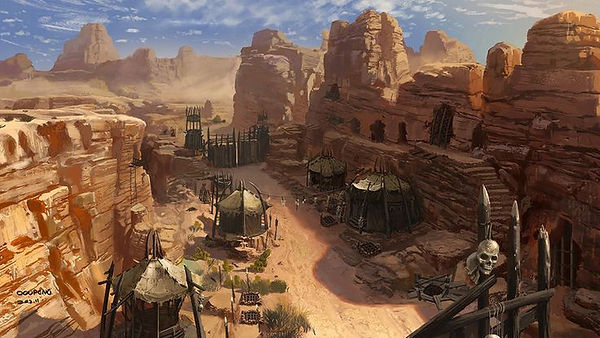
While Khet is often known for its wealth and authority, not all of its lands are peaceful or prosperous. There are dark corners of the realm where criminals and outcasts from all over Absathus have forged settlements in the desolate expanse. These rough settlements, often hidden within the harsh
deserts, are havens for those who live outside the law, thriving on lawlessness and chaos. The Badlands, a vast and unforgiving stretch of desert in Khet, is home to numerous such settlements, where survival is not just a way of life, but a brutal test of strength and cunning.
The people who live here are typically members of various clans, many of which are either Noth'ra or Nazemi in origin, reflecting the different cultural influences of the Upper Kingdom's two ruling brothers, Khet and Har'ket. These clans are bound by the same principles—strength, survival, and the ability to withstand the harsh conditions of the desert. Life here is tough and dangerous; the desert itself is a relentless force that tests the will of all who attempt to live in it, offering little mercy. If the scorching sun and treacherous sandstorms do not claim you, then the ruthless bandits and raiders of the Badlands likely will. They are known for their savage tactics, preying on travelers and weaker settlements, leaving nothing but ruin in their wake.
However, these rough and violent territories are not isolated to Khet alone. Similar clans, embracing the brutal philosophy of "survival of the fittest," are also scattered throughout the region of Abesh. In both Khet and Abesh, the social structure is one defined by strength and ruthlessness, where only the strongest survive and thrive. Those who cannot defend themselves are often left to perish, whether from the harsh elements or at the hands of their fellow outcasts.
In these regions, power is determined not by wealth or nobility, but by sheer force and the will to endure. The clashing of these survivalist societies creates a volatile and dangerous environment, where betrayal, cunning, and violence are often the keys to power. It is a world where weakness is not tolerated, and every day is a struggle to stay alive amidst the ever-present threat of nature, banditry, and ruthless clans.
Saisir Temple
_______________________________________________________________________________________________________________
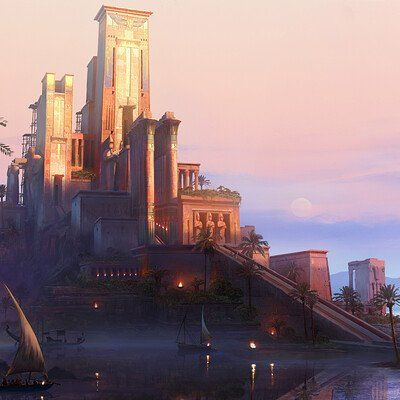
Saisir Temple is an ancient and revered religious site dedicated to the worship of Khet, one of the ruling brothers of Absathus. Located in a sacred part of the land, the temple serves as a focal point for many of the Nazemi races who make pilgrimages to honor and pay homage to Khet. The temple is a grand structure, its towering spires and intricate carvings telling stories of Khet's divine influence over the lands and people of Absathus. Pilgrims travel from across the realm to seek Khet's favor, and Saisir Temple is a place where devotion, rituals, and offerings converge.
The gifts offered to Khet vary depending on the social status of the worshippers. Those of higher status might bring precious gold, rare jewels, or elaborate incense made from exotic materials, signifying their wealth and devotion. Meanwhile, common folk might offer simple yet significant gifts, such as the finest grains for brewing or humble offerings of food and drink. These acts of devotion are seen as a way to gain Khet’s blessing, ensuring prosperity and favor for the people and their lands. Each offering, regardless of its size or value, is given with the intention of honoring the god and securing his protection and guidance.
At the heart of Saisir Temple are its priests and priestesses, who dedicate their lives to serving Khet and maintaining the sanctity of the temple. These sacred individuals are bound by vows of celibacy and poverty, forgoing personal wealth and relationships to remain humble and devoted to their divine service. The vows of humility and asceticism are considered essential in maintaining the purity of the temple’s teachings and ensuring that the priests and priestesses remain truly connected to the will of Khet. They perform rituals, offer blessings, and guide the followers of Khet, maintaining a deep spiritual connection with the god while acting as intermediaries between him and the people.
The temple is not just a place of worship, but a symbol of Khet's rule and divine authority over the realm. It serves as both a center of religious and cultural life for the Nazemi people and a testament to the enduring power of Khet, whose influence continues to shape the course of history in Absathus.
The Mother Obelisk
_______________________________________________________________________________________________________________
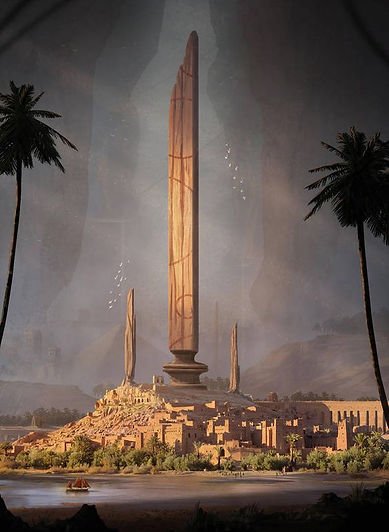
The Temple of The Mother Obelisk is a sacred place of reverence and worship dedicated to Hunra, the "Great Mother" and divine counterpart to Khet. Erected in her honor, the temple stands as a symbol of fertility, motherhood, and the nurturing aspects of life that Hunra represents. The towering obelisk at the heart of the temple, an imposing and sacred structure, is said to be a direct connection to Hunra herself, drawing the faithful to seek her blessings and guidance.The temple’s tenants are Nazemi women who have dedicated their lives to servitude in the name of Hunra. These women, known for their deep faith and commitment to the goddess, have taken vows of celibacy and renunciation, much like the priests and
priestesses of Saisir Temple. By forgoing personal relationships and the pursuit of motherhood, the women of the temple humbly serve the goddess and the worshippers who come seeking help. Their lives are devoted to maintaining the sacred space, performing rituals, and offering counsel to those who come to the temple in need.
One of the primary reasons women visit the Temple of The Mother Obelisk is to seek the blessings of Hunra, especially for fertility and motherhood. Many women who struggle with infertility or face maternal complications make pilgrimages to the temple, hoping that the goddess will bestow her grace upon them. The temple has earned a reputation as a place of healing and hope, where the divine touch of Hunra is believed to help women overcome the trials and tribulations of motherhood. The blessings offered here are not only for fertility but also for the protection and well-being of mothers and their children.
The rituals performed at the temple are sacred and often include offerings of flowers, herbs, and other symbols of life and renewal. Women who come to the temple may spend time in meditation and prayer, seeking connection to the divine and guidance for their personal struggles. The temple also provides a place of comfort and community for women who may be facing the pain of infertility or the dangers of childbirth. It is a sanctuary where the devotion of the tenants and the power of Hunra work together to bring hope and healing to those in need.
In this way, the Temple of The Mother Obelisk stands as a powerful, life-affirming institution within Absathus, serving as both a spiritual center for the women of the Nazemi people and a place of solace and transformation for those who seek the goddess's blessings.
_______________________________________________________________________________________________________________
Semna Palace

Semna Palace is a majestic and sacred site nestled within a lush jungle oasis, surrounded by the abundant life nourished by the Tanu and Tanzu rivers. These two mighty rivers wind through the jungle, ensuring the land remains vibrant and full of vitality. The palace itself stands as both a physical and symbolic heart of
this fertile land, its grandeur reflecting the deep history and significance of the place.
Legend holds that the location of Semna Palace is where the ancient Tanzu, a revered figure, met a Noth'ra woman named Iritet. Their love story, though born amid the tumultuous and bitter conflict between the ancient brothers Khet and Har'ket, became a symbol of hope and unity. Despite the hatred that divided their peoples, Tanzu and Iritet's bond transcended these barriers, and it is said that their love was the catalyst for the belief that one day, the two kingdoms—those ruled by the brothers Khet and Har'ket—might reunite in peace. Their union, born of love and defiance of the old enmities, became a gift that breathed new hope into the hearts of the people, inspiring visions of unity and harmony for the future.
Semna Palace stands as a sacred home to the reigning descendants of Tanzu and Iritet. Their bloodline, marked by this ancient and powerful union, carries the legacy of both Tanzu's nobility and Iritet's Noth'ra heritage. The palace is more than just a royal residence; it is a symbol of reconciliation and the possibility of a future where division gives way to unity. It represents the ideals of love, courage, and hope, offering a living testament to the dream that one day, the ancient conflicts between the two kingdoms might heal.
The palace itself is a stunning structure, harmoniously integrated with the surrounding jungle oasis. Vines drape over its towering columns, and the sounds of the rivers echo in the background, creating an atmosphere of peace and tranquility. As a place of great spiritual and political importance, Semna Palace is both a site of governance and a sanctuary for those who seek to honor the legacy of Tanzu and Iritet and their vision for a unified world.
_______________________________________________________________________________________________________________
Menda Keep & Etem'kah
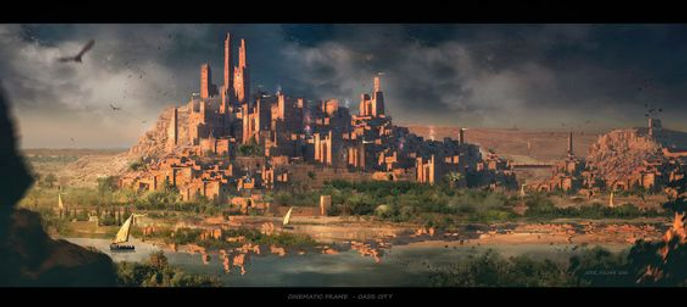
Menda Keep
Etem'kah is a fortified city, surrounded by imposing walls that protect its inhabitants and guard its military legacy. The city is home to a diverse population, primarily composed of Narihu and Khetian peoples, known for their strength, resilience, and fierce loyalty to the traditions of their homeland. Etem'kah stands as a testament to the martial prowess and craftsmanship that are central to the culture of Khet. It is here that some of Khet's finest warriors and weaponsmiths are born, honing their skills through generations of tradition and discipline.
The city is renowned for its formidable military presence and its role in producing elite fighters and exceptional weapons. The craftsmanship of the weaponsmiths of Etem'kah is legendary, with swords, spears, and armor crafted with unparalleled precision and skill. These weapons are forged not only for defense but to symbolize the strength and determination of those who wield them.
To prepare for battle and defend the realm, young recruits from Etem'kah undergo a rigorous training regimen. Many of these recruits are sent to Menda Keep, a nearby military stronghold, where they spend three years undergoing intense training to prepare for the Great Trial known as the Ziir-kah. This trial is a brutal test of strength, endurance, and skill, where only the most capable warriors emerge victorious. The Ziir-kah is not just a physical trial but also a rite of passage, marking a recruit's ascension into the ranks of Etem'kah’s finest soldiers.
The Great Trial is a significant event in the city, drawing the attention of citizens and warriors alike. It is a defining moment in the lives of the recruits, as their success or failure determines their place in the city's martial hierarchy. For those who succeed, the reward is not only the honor of being counted among the elite of Khet’s military forces but also the responsibility of defending the kingdom from its enemies.
Etem'kah is not merely a city; it is a living embodiment of Khet’s military might and the unyielding spirit of its people. The fortress walls are a symbol of strength and protection, standing as a constant reminder of the vigilance required to maintain the peace and order of the realm. It is a place where warriors are forged in the fires of discipline and where the future of Khet's defense is shaped by those who train there, ready to face any challenge that comes their way.
Etem'kah
Etem'kah, nestled within the ancient and fortified walls of Menda Keep, is a city of both refuge and strength. Originally constructed by the first Narihu warriors, Etem'kah was designed as a sanctuary, a place of protection and resilience, but also as a strategic fortress to defend against the ever-present threat of Zaripetian forces. The location of the city, surrounded by the sturdy, towering walls of Menda Keep, ensures that it remains a bastion of security, with its defenses constantly reinforced and its warriors ever vigilant.The origins of Etem'kah lie in the Narihu’s history, a people known for their martial prowess and unyielding will. The first Narihu warriors built Etem'kah not only to protect their people but to serve as a focal point for Khet’s military might. Over time, Etem'kah became an integral part of Khet’s defense system, with the Narihu and Khetian populations coming together to forge a city where strength and unity were paramount.In addition to its role as a fortress, Etem'kah is renowned for its skilled weaponsmiths. These craftsmen are among the finest in all of Absathus, forging weapons that are considered among the greatest in the realm. The smiths of Etem'kah, using methods passed down through generations, create blades, spears, shields, and armor imbued with both function and artistry. These weapons are not only essential for the defense of Khet but also represent the cultural pride and expertise of the city’s people. The weapons forged in Etem'kah are said to be unmatched in their quality, both in strength and design, and are highly sought after across the realm.The forging of Khet's greatest weapons is an art that is taken with the utmost seriousness in Etem'kah. Each weapon is made with precision and care, designed to serve its purpose in battle while symbolizing the might of Khet. Whether they are used to defend the realm against the Zaripetian threat or to train the next generation of warriors, the weapons of Etem'kah are a reflection of the unbreakable spirit of the city and its people.As a place of refuge, fortress, and craftsmanship, Etem'kah stands as one of the most crucial cities in Khet’s military apparatus. It is a city where warriors are born, weapons are forged, and the defense of the realm is continuously honed. The city’s legacy as a stronghold against external threats and a center of martial excellence continues to shape the destiny of Absathus, ensuring that its people remain ever prepared for the challenges ahead.
_______________________________________________________________________________________________________________
Abarakht: City of The Dead
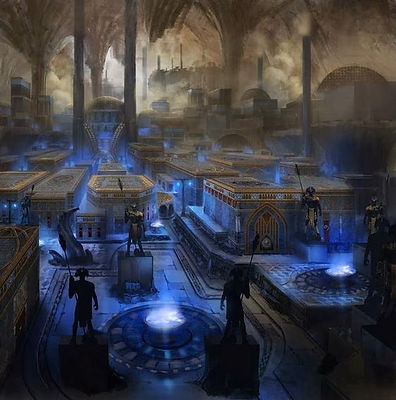
The final resting place of kings, queens, and nobles of Absathus is a sacred and hallowed ground, where the ancient rulers and their families lie in eternal slumber. This burial site, known as the Tomb of the Ancients, is a solemn and revered location, standing as a testament to the legacy of the kingdom's past rulers. Here, the bodies of the deceased are laid to rest in grand tombs and mausoleums, surrounded by the wealth and treasures that once symbolized their power and prestige. It is said that the ancients, when they passed from this world, were buried with their riches, their jewelry, their finest belongings, and sometimes even the artifacts that defined their reigns. These treasures were meant to
accompany them in their journey to the afterlife, a practice that reinforced the belief in the eternal nature of their power and importance.The Tomb of the Ancients is not only a resting place for the dead but also a site of great spiritual significance. According to legend, the spirit of Abishai, the divine protector of the dead, watches over this sacred ground. Abishai is said to be a mighty spirit, a guardian of the souls of the departed, ensuring their safe passage to the Nu'aat, the realm of the afterlife. The Nu'aat is a place where the spirits of the deceased are believed to journey to find peace and eternal rest. Abishai, with its protective presence, guides the souls on their journey, warding off any dark forces that might seek to disturb or harm the dead. The Tomb of the Ancients is a place of reverence and pilgrimage, with many visiting to honor the memory of those who once ruled and shaped the kingdom. Offerings are made to Abishai and the ancestors, prayers are whispered, and songs are sung in remembrance of the kings, queens, and nobles who paved the way for the present. It is a reminder of the cyclical nature of life and death, and the enduring power of the spirits who once walked the earth. Over time, the Tomb of the Ancients has become a symbol of the kingdom’s deep respect for its past, for the rulers who guided it, and for the beliefs that continue to shape its culture. As the spirits of the deceased are protected on their journey to the Nu'aat, their legacy remains alive, etched into the stones of the tombs and the hearts of those who remember them.
_______________________________________________________________________________________________________________
Disclaimer: I do not claim ownership of music and images used in the creation of this website. All credit for the images and media go to the original owners and artists. Any pictures and music used in the making of this website will be taken down upon request by its owner. Thank you.